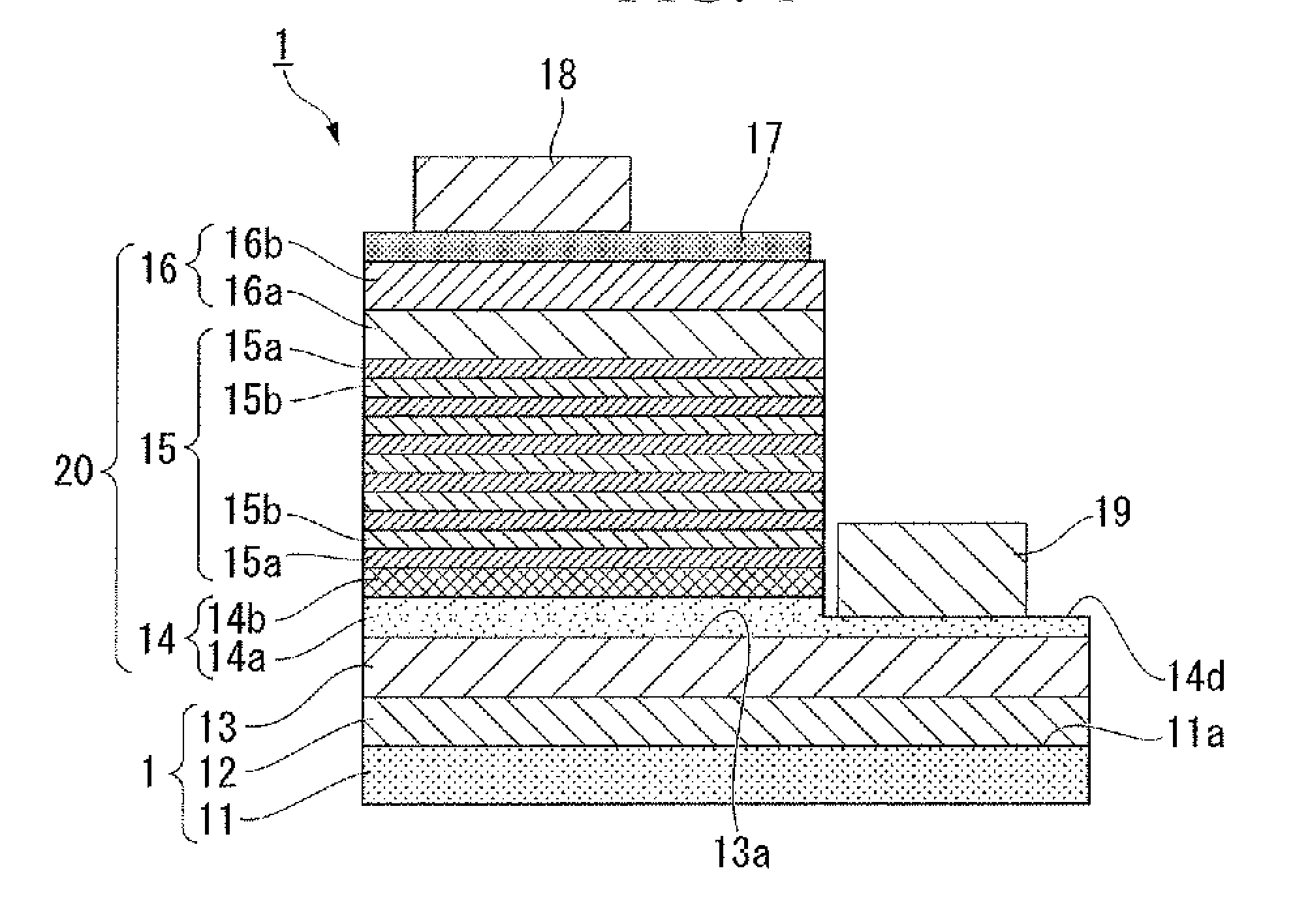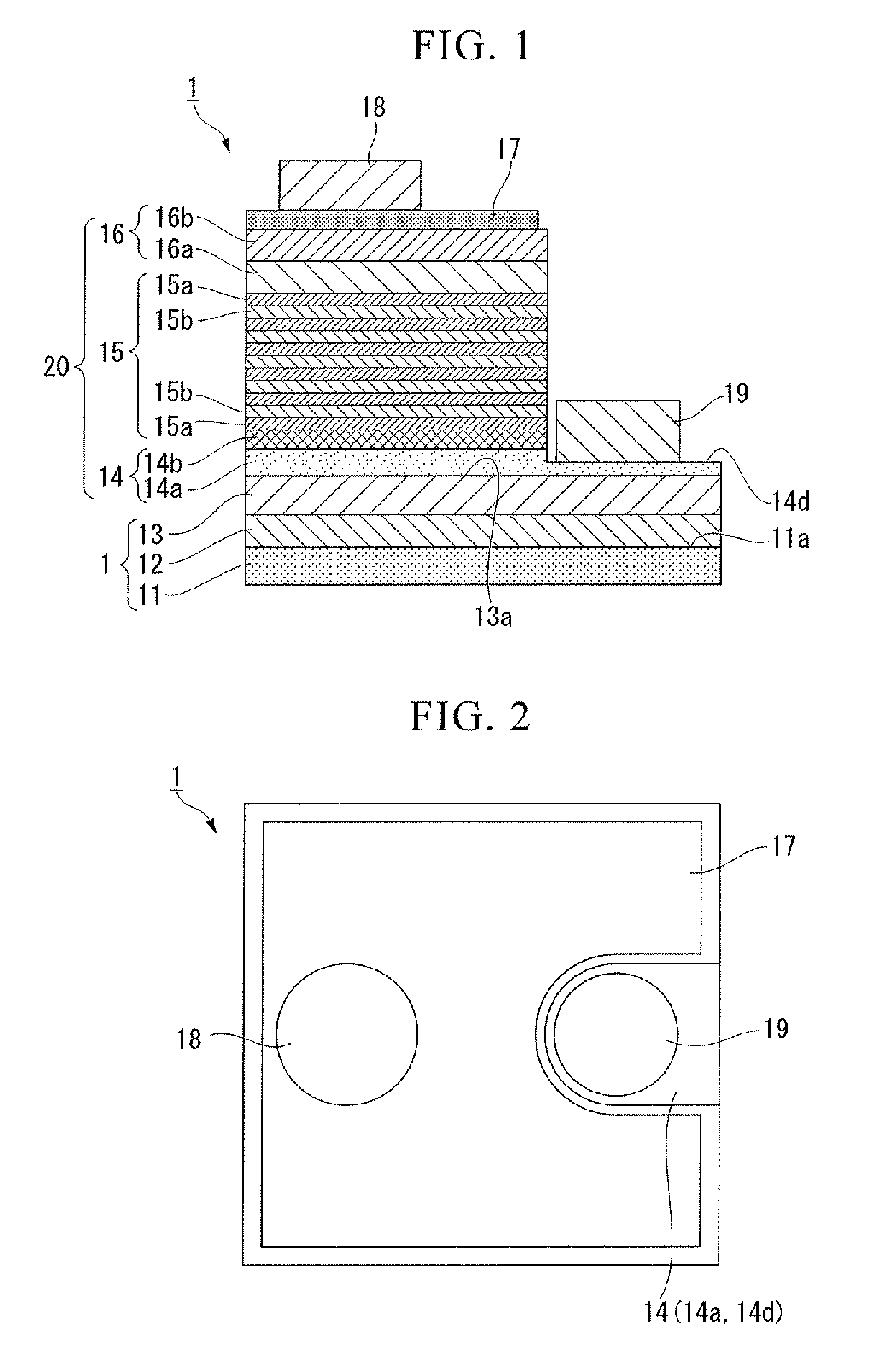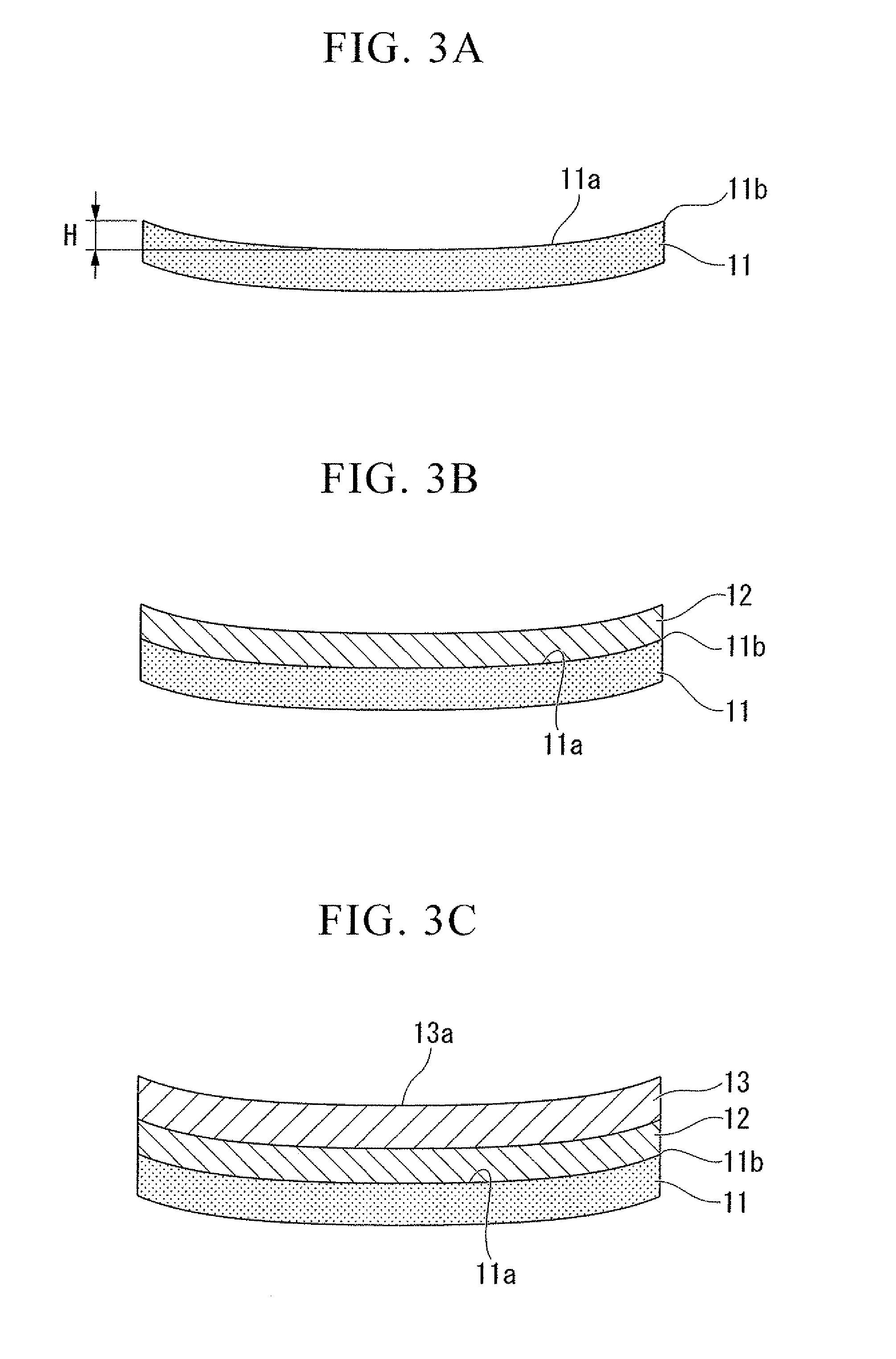Method for manufacturing group iii nitride semiconductor light emitting element, group iii nitride semiconductor light emitting element and lamp
a technology of nitride and light emitting elements, which is applied in the manufacturing of semiconductor/solid-state devices, semiconductor devices, electrical devices, etc., can solve the problems of difficult epitaxial growth of crystals, large lattice mismatch, and inability to obtain crystals having excellent crystallinity, etc., to achieve excellent crystallinity, excellent emission intensity, and suppressed warping
- Summary
- Abstract
- Description
- Claims
- Application Information
AI Technical Summary
Benefits of technology
Problems solved by technology
Method used
Image
Examples
example 1
[0190]In this Example, an AlN layer was formed as the intermediate layer 12 by an RF sputtering method on the c-plane (principal plane 11a) of the sapphire substrate 11 having a diameter of 4 inches (100 mm). A GaN layer was formed as the underlayer 13 thereon by an MOCVD method. By so doing, a wafer in which the intermediate layer 12 and the underlayer 13 were deposited on the substrate 11 was produced. Then, further, the semiconductor layer 20 was formed on the underlayer 13, by which the light emitting element 1 as shown in FIG. 1 was produced. Moreover, the lamp 3 (light emitting diode: LED) as shown in FIG. 4 was produced using this light emitting element 1.
[0191]First, a sapphire substrate 11 having a diameter of 4 inches (101.6 mm; simply expressed as 100 mm in the description of this application) was prepared, and was subjected to both methods of heating and applying a stress so as to adjust the substrate 11 such that at least a part of the substrate edge 11b had an amount o...
example 2
[0227]In the same manner as that of Example 1, a 4-inch (100 mm) sapphire substrate was prepared. A semiconductor light emitting element was formed on this substrate in the same manner as that of Example 1, with the exception that the thickness of the substrate, the amount of warping H (μm) at room temperature, the X-ray rocking curve half width of the (0002) plane (arcsec), and the X-ray rocking curve half width of the (10-10) plane (arcsec) were set at values shown in Table 1. The wavelength distribution σ was evaluated and was shown to be 3.2 nm, being within a preferable range.
example 3
[0228]A 6-inch (150 mm) sapphire substrate was prepared. A semiconductor light emitting element was formed on this substrate in the same manner as that of Example 1, with the exception that the thickness of the substrate, the amount of warping H (μm) at room temperature, the X-ray rocking curve half width of the (0002) plane (arcsec), and the X-ray rocking curve half width of the (10-10) plane (arcsec) were set at values shown in Table 1. The wavelength distribution σ was evaluated and was shown to be 4.4 nm, being within a preferable range.
PUM
 Login to View More
Login to View More Abstract
Description
Claims
Application Information
 Login to View More
Login to View More - R&D
- Intellectual Property
- Life Sciences
- Materials
- Tech Scout
- Unparalleled Data Quality
- Higher Quality Content
- 60% Fewer Hallucinations
Browse by: Latest US Patents, China's latest patents, Technical Efficacy Thesaurus, Application Domain, Technology Topic, Popular Technical Reports.
© 2025 PatSnap. All rights reserved.Legal|Privacy policy|Modern Slavery Act Transparency Statement|Sitemap|About US| Contact US: help@patsnap.com



